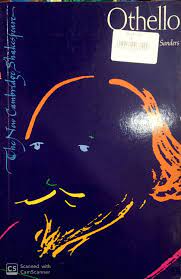Othello (English, Paperback, William Shakespeare)
Rs.699.00 Rs.249.00
ISBN-9780521294546, Condition- Good
Out of stock
If anything, Othello has increased its stature as one of Shakespeare’s greatest tragedies ever since it was first written, between 1603 and 1604, due to the victimisation suffered by its tragic hero, Othello, as a result of his skin colour. Othello is a “noble Moor”, a North African Muslim who has converted to Christianity and is deemed one of the Venetian state’s most reliable soldiers. However, his ensign Iago harbours an obscure hatred against his general, and when Othello secretly marries the beautiful daughter of the Venetian senator Brabanzio, Iago begins his subtle campaign of vilification which will inevitably lead to the deaths of more than just Othello and Desdemona.
An extraordinary play, both for its dramatic economy and power as well as its remarkable language, from Othello’s bombastic “traveller’s history” to Desdemona’s elegiac “willow song”, the play raises uncomfortable questions about ongoing problems of not only racial identity but also sexuality, as Othello and Desdemona’s sexual relationship becomes the voyeuristic site of Iago’s attempt to destroy them. Particularly fascinated with the question of what it means to “see”, Othello also contains one of the greatest tragic death scenes in all of Shakespeare, with Othello’s final identification with “a malignant and a turbaned Turk”.
Source- Goodreads.com
H8
Reviews
There are no reviews yet.
Only logged in customers who have purchased this product may leave a review.
Related products
299 and Above
Classics Book Store
Almost New Books
Captain Underpants and the Wrath of the Wicked Wedgie Woman (English, Paperback, Dav Pilkey)
Classics Book Store
Almost New Books
Almost New Books
It’s Not About The Bike (English, Paperback, Lance Armstrong)



















